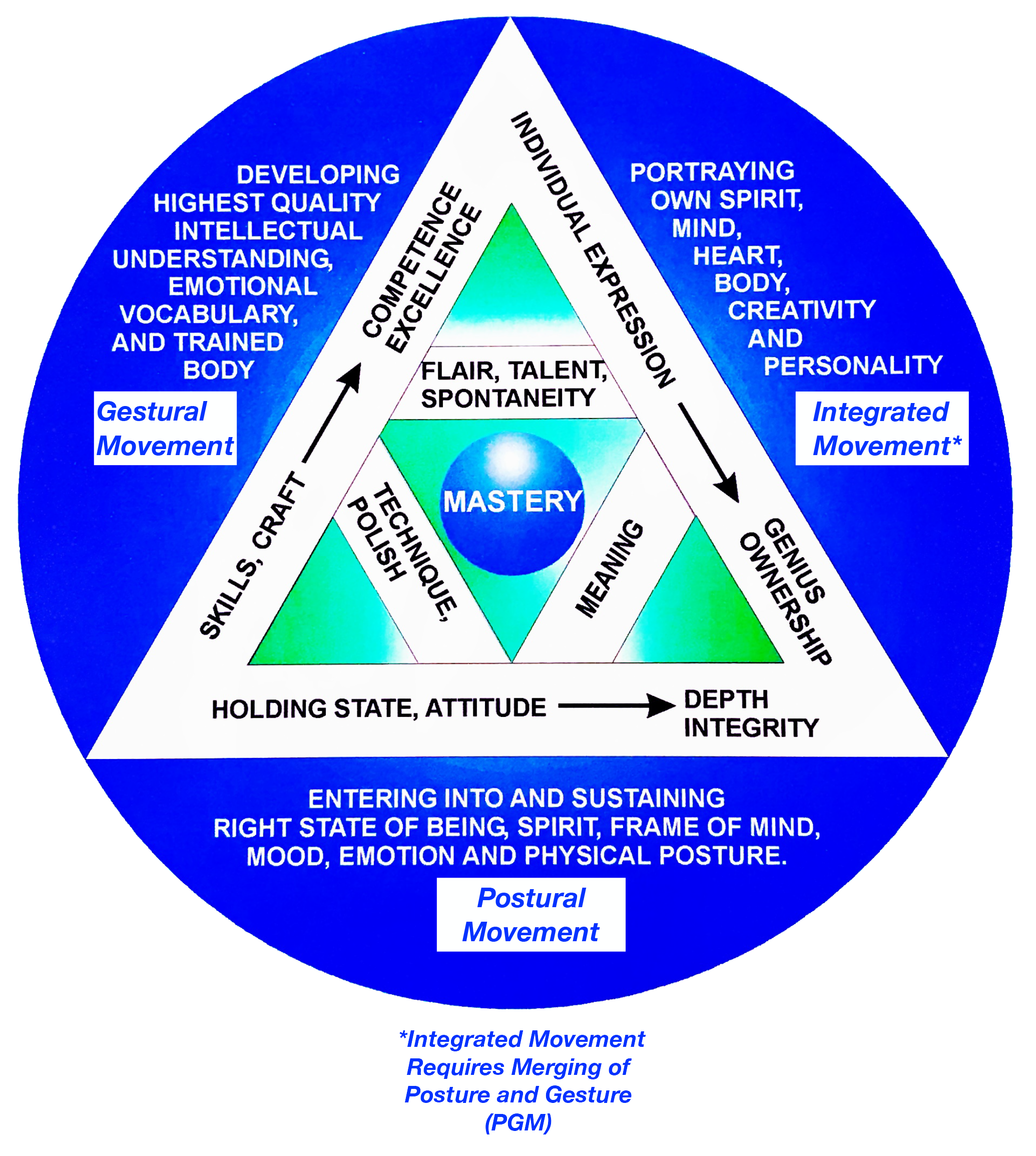Mastery
Mastery of performance requires a state of mind and body in which flexible, trying out, “doing” characteristics are backed up by an appropriate and supportive attitude or way of “being”. This means the individual has a high degree of personal investment in the resulting behaviour. The person is not just trying out a particular action or skill, not trying on a particular role or attitude but has “become” the action. The being and doing aspects of the personality have been combined. The person does what they are, is what they do.
The combination of these personality aspects is what distinguishes true mastery of a particular task, function, skill or art from mere technical competence. It is what makes the difference between a truly great or peak performance and one that demonstrates technical expertise and intensity but lacks the mysterious ingredient to turn it into a memorable individual masterpiece.
When a person is able to sustain peak performance, they attain a high level of technical competence over the various parts of the chosen activity. They also develop an appropriate attitude that enables total commitment to the activity, bringing the two together, which requires the capacity to turn a mechanical if highly competent performance of various skills into a unified individualised expression of the individual’s talent. No other person could perform the same task or activity in quite the same way.
This same process occurs whenever we learn a new skill to the point where it is no longer an extra bit grafted on, but has become an integral part of the way we behave, or, indeed, who we are. No two persons with the same level of technical competence will perform an activity or task with precisely the same effect. At the root of this ability is our capacity to integrate the gestural and postural aspects of the personality, ie. to become what we do.
When the gestural personality and the postural personality combine, they become the driving force of Action Motivation. Action Motivation has two compelling components:
- The will to pursue a particular activity based upon the integration of body and mind. This leads to action thinking which requires the whole body and the whole person and results in committed decision making and action.
- The satisfaction gained from performing the activity purely for its own sake regardless of any end result. This derives from the fulfilment of being what we do and finding our own unique way of performing the task.
Model For Mastery#

© Pamela Ramsden 2000